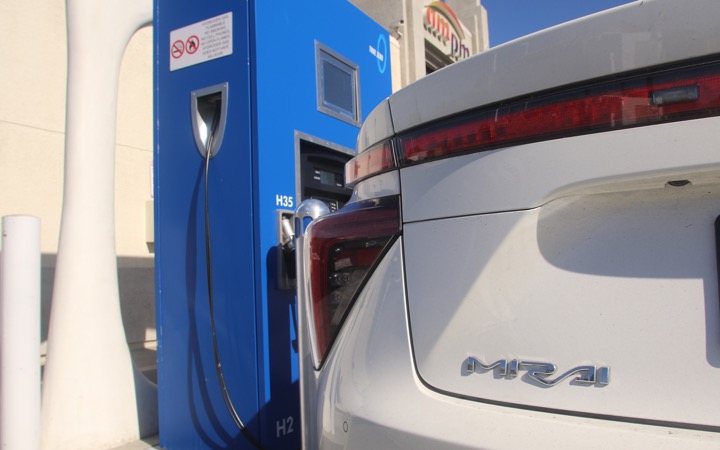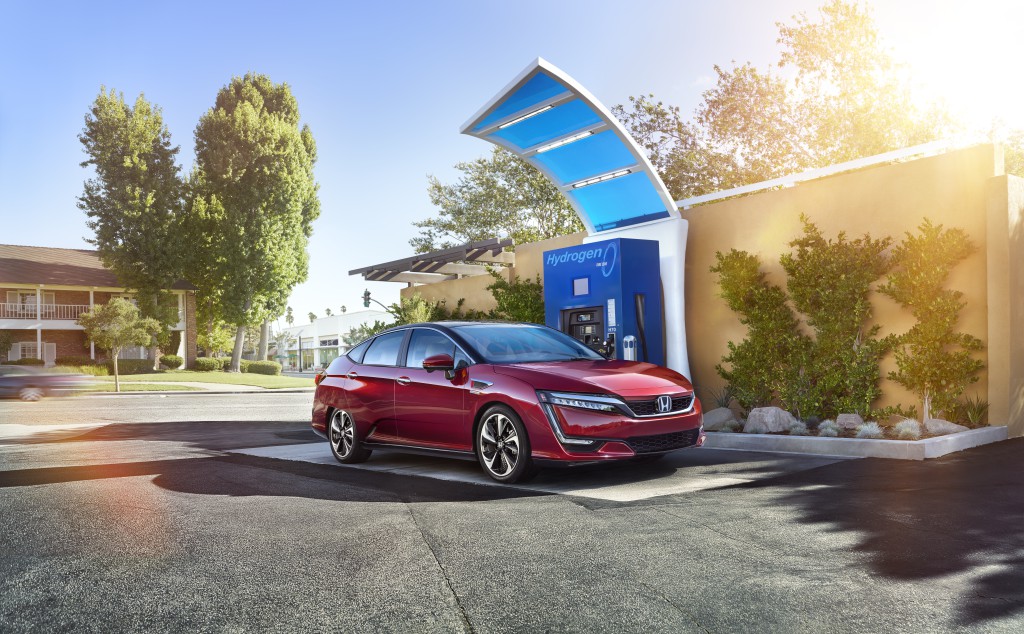To achieve mass adoption, fueling infrastructure for hydrogen fuel-cell vehicles will have to be hugely expanded.
It's a problem similar to that faced by battery-electric cars, but charging stations are far cheaper and easier to install—and can rely on existing grid infrastructure for their supply of electricity.
Hydrogen fueling stations are vastly more expensive, and there is also the matter of where to get the hydrogen they dispense.
DON'T MISS: SimpleFuel home hydrogen fuel dispenser wins $1 million DoE prize
That may be why a new report predicts the number of global hydrogen fueling stations will remain relatively small over the next 15 years.
The world will have 4,808 hydrogen fueling stations in 2032, up from just 285 in 2016, according to a study by Information Trends (via Computerworld).
The study also predicts U.S. hydrogen fueling stations will number 78 by the end of this year, 197 by 2022, and 1,208 by 2032.

True Zero hydrogen fueling station
There are currently 33 public hydrogen stations in the U.S., according to the Department of Energy's Alternative Fuels Data Center.
The vast majority of those are in California, the only state where hydrogen fuel-cell cars are currently offered.
Honda, Hyundai, and Toyota have limited sales of their models—the Clarity Fuel Cell, Tucson Fuel Cell, and Mirai, respectively—to California because other states do not have sufficient fueling infrastructure.
ALSO SEE: Gas, Electricity, Hydrogen: How Many Cars Can 'Fuel' And What Will It Cost? (Aug 2015)
Even California can only support fuel-cell cars in the more populous regions of the state, and early fueling stations experienced reliability issues as operators dealt with the challenge of dispensing large quantities of hydrogen to the public for the first time.
California has committed to funding a network of 100 stations through 2020.
By that time, automakers will likely still be selling fuel-cell cars in relatively small numbers, which a network of that size can handle.

2017 Honda Clarity Fuel Cell
Outside the U.S., Denmark currently has the most extensive network of fueling stations, according to the Information Trends study.
Germany is soon expected to surpass the Scandinavian country with a network of 400 stations, set to roll out over the next six years.
German automakers are aggressively developing battery-electric cars, but Mercedes-Benz is expected to launch a fuel-cell version of its GLC-Class crossover this year.
MORE: First 2017 Honda Clarity Fuel Cell sedans delivered in California (Dec 2016)
Information Trends believes the cost of hydrogen fueling stations will eventually drop, allowing for faster infrastructure expansion.
The research firm is fairly bullish on fuel-cell vehicles.
In a report released last year, it predicted that 20 million fuel-cell cars would be sold worldwide by 2032, and that they would rival battery-electric cars in market share.
_______________________________________________












